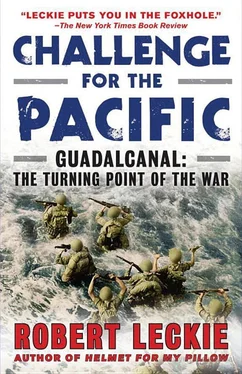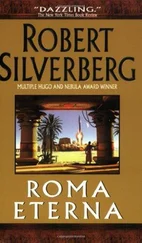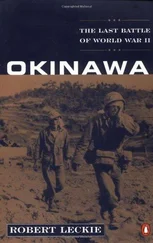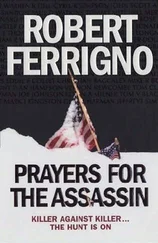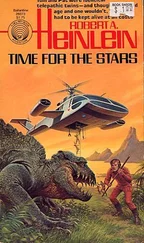At bay on New Guinea, barely hanging on on Guadalcanal, the Japanese were not able to send the 51st Division and an independent brigade to the aid of Lieutenant General Haruyoshi Hyakutake, as they had planned.
They could only struggle to supply him, and this too became a costly ordeal.
The first method of supply was by drums. They were filled with rice or other supplies, linked to each other by rope, lashed to the decks of destroyers for quick transit down The Slot, and then cast into the water off Tassafaronga where they would either be washed ashore or caught and pulled aground by waiting swimmers.
The first attempt at drum-supply produced the Battle of Tassafaronga. On the night of November 30 the Tokyo Express, with Raizo Tanaka still at the helm, collided with a superior American force of cruisers and destroyers under Rear Admiral Carleton Wright. The cargo of drummed-rice had to be abandoned, but Tanaka the Tenacious gave the Americans another bloody lesson in night torpedo-fighting. His ships sank Northampton , put a hole big enough to admit a bus in the side of Honolulu , and knocked Pensacola, New Orleans , and Minneapolis out of action for nearly a year. For this, Tanaka only suffered the loss of destroyer Takanami .
On December 7 a second drum-supply attempt was broken up by American aircraft and those torpedo boats, which, now arriving at Guadalcanal in numbers, were beginning to take over at night where Cactus Air Force left off by day. And while the American sea and air arms were blocking the Tokyo Express, the ground troops had gone over to the offensive.
On December 9, command on Guadalcanal passed from the Marine General Vandegrift to the Army General Patch. Patch wisely decided to wait until he had sufficient forces before attacking. Eventually he would have an entire corps—the XIV—consisting of the Americal Division, the 25th Infantry Division, the Second Marine Division, and, later on, but not committed to combat, the 43rd Infantry Division. With these troops, Patch went out after Hyakutake and his diseased and hungry 17th Army.
The Japanese resisted stubbornly, nevertheless a slow, grinding, overwhelming American assault—supported by air and artillery—eventually dislodged them from their positions west of the Matanikau. Meanwhile, in Tokyo, staff officers exchanged blows during bitter debates over whether Guadalcanal was to be reinforced or evacuated. 3The evacuation party, led by Premier Tojo, gradually gained the upper hand. Finally, at a conference of Imperial General Headquarters convened in the Imperial Palace, Japan admitted defeat. It was decided to evacuate.
The date of that historic decision was December 31, 1942, and by that time, most of the men who had landed at Guadalcanal on August 7 had left the island.
They had begun going out to their ships in late December, these men of the First Marine Division, and their departure would continue through early January. Some of them had been on the lines more than four months without relief, and they came down to the beach at Lunga ragged, bearded, and bony. Some of them had hardly the strength to walk to the boats, and yet, before they left, all of them had visited their cemetery.
It was called “Flanders Field,” and it was a neat cleared square cut into the Lunga coconut groves. Each grave was covered with a palm frond and marked with a rough cross onto which mess gear and identification tags were nailed. Departing Marines knelt or stood there in prayerful farewell, wondering, dazedly, how it was that there were so few graves.
In all, 774 Marines of this division had died, 1962 had been wounded, and another 5400 had been stricken with malaria. Ultimately, the Second Marine Division casualties would reach 268 dead and 932 wounded, so that all Marine ground losses would total 1042 dead and 2894 wounded. Army casualties would total 550 dead and 1289 wounded, making a grand total in American ground casualties of 1592 dead and 4183 wounded. American naval casualties, never to be compiled, would certainly equal, perhaps even surpass this, while the much smaller losses among the airmen would also never be known.
Yet, the Japanese would lose 28,800 soldiers on Guadalcanal itself, many thousands more would die at sea, 2362 pilots and airmen would be lost, and unknown thousands of sailors would also perish—in all, a probable 50,000 men lost in the unsuccessful struggle to recover “this insignificant island in the South Seas.”
But victory, as these Marines knew, is not always measured by casualties, nor do casualties describe how victory is gained. Sacrifice and valor and doggedness and skill, these gain victory, and these, though unmeasurable, at least may be described. In their cemetery, these Marines found an epitaph describing this greatest of Pacific victories and most glorious of American stands. It was a poem. Its words had been painfully picked out on a mess gear with the point of a bayonet. It said:
And when he gets to Heaven
To St. Peter he will tell:
“One more Marine reporting, sir—
I’ve served my time in Hell.”
So they went out to their ships, with “hell” etched on their faces and evident in their sticks of bones and ragged dungarees. They went out so weak that they could not climb the cargo nets and the sailors, weeping openly, had to haul them aboard or fish them from the Bay into which they had dropped. They lay on the grimy decks of these blessed ships, gasping, but happy. And then they heard the anchor chains clanking slowly up the hawse pipes and they struggled to their feet for a last look at Guadalcanal.
They could not see, below the eastern horizon, that Aola Bay where Martin Clemens had begun an ordeal that was to end, in early December, with evacuation and a furlough in Australia. But they could see Red Beach, where they had landed, and Koli Point, where so many enemy had landed. There, still to their left, was the Tenaru, that evil green lagoon and sandspit in which the Japanese myth of the superman had been buried, and for the loss of which Colonel Ichiki had killed himself. To the right lay Henderson Field and all around it those sister airfields busy with two-way aerial traffic. Beyond it was Bloody Ridge which Red Mike Edson and the Raiders had held against the Kawaguchi Brigade, but the fields of kunai fertilized by the blood of the Sendai Division were not visible. Grassy Knoll was, though, rearing its tan hillside above the jungle roof, still, as it had been since August 7, an unattainable first-day’s objective. On the right, west of Lunga Lagoon and those rapidly rising piles of food and supplies, lay the broad mouth of the Matanikau, and west of that, the hook of Point Cruz, and then, stretching far away to the western horizon, Kukumbona and Tassafaronga, and the last of the Japanese landing places from which, on an early February night, the Tokyo Express would depart on its last run, taking with it the last men of the first Japanese army in history to submit to the disgrace of evacuation.
All of these landmarks these men could see in that last long searching look made half of hatred and half of a warrior’s poignant love for the battlefield that made him. And they could see also, while motors throbbed beneath their feet, while the transports made the customary sunset departure for the covering darkness of the open sea, they could see a round red sun beginning to set behind Cape Esperance.
It was sinking, like the Rising Sun of Japan, into the dark Pacific.
1. Morison, Samuel Eliot, The Two-Ocean War: A Short History of the United States Navy in the Second World War (Boston: Little, Brown, 1963), p. 35.
Читать дальше
